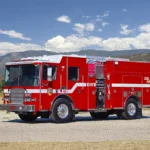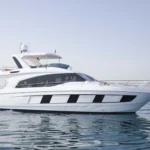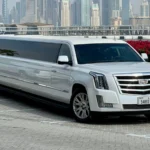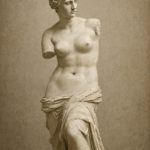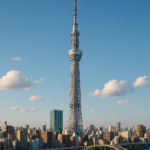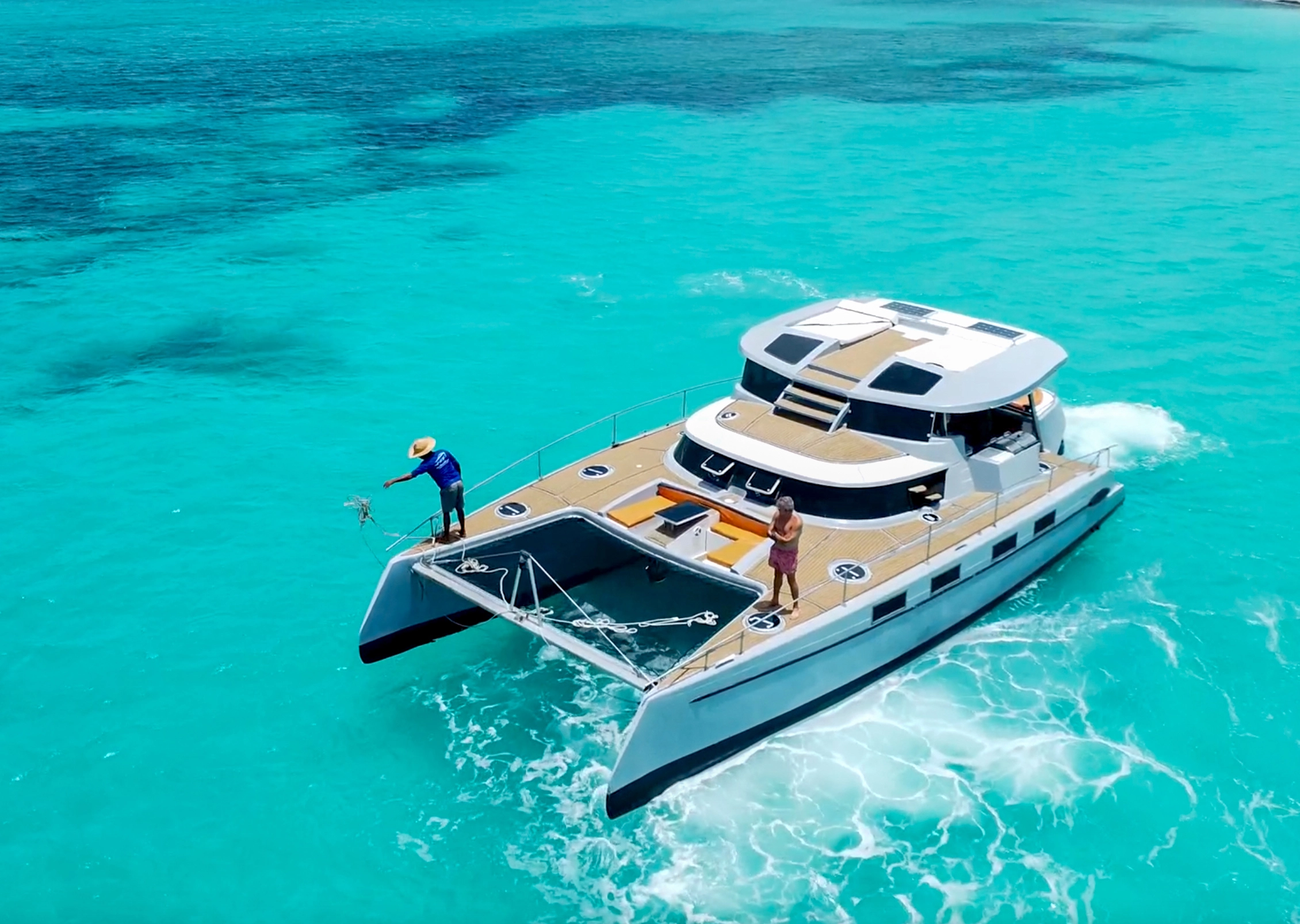
Welcome to our exploration of the fascinating world of catamarans! Whether you’re a seasoned sailor or just curious about these unique vessels, our blog titled “25 Interesting Facts about Catamarans” is designed to enlighten and entertain. Catamarans, known for their twin-hull design and stability on the water, offer a distinct sailing experience that sets them apart from traditional monohulls. In this post, we’ll dive into intriguing facts about their history, design, performance, and the various ways they are used around the globe. Get ready to discover why catamarans are not just boats, but a lifestyle choice for many adventurers and sailing enthusiasts!
Definition: A catamaran is defined as a type of boat or ship that features two parallel hulls of equal size. This design is distinct from monohulls, which have a single hull. The dual-hull structure provides enhanced stability and buoyancy, making catamarans less prone to capsizing. This characteristic is particularly beneficial in rough waters, where the wider stance of the hulls helps to distribute the vessel’s weight more evenly and reduce the rolling motion experienced in monohulls.
Origin: The term “catamaran” has its roots in the Tamil language, originating from the word “kattumaram,” which translates to “tied wood.” This reflects the traditional construction methods used in India, where logs were lashed together to create stable floating platforms. The design has evolved significantly over centuries, but the fundamental concept of using two hulls for enhanced stability and performance remains intact, showcasing the ingenuity of early maritime cultures.
Stability: One of the key advantages of catamarans is their stability, which arises from their wide beam and dual hulls. The increased width reduces the likelihood of heeling, or tilting, when under sail. This stability allows for a more comfortable experience on board, particularly in choppy waters. As a result, catamarans are often preferred for recreational sailing, as they provide a smoother ride and are less likely to cause seasickness among passengers.
Speed: Catamarans are generally faster than monohull boats due to their lighter weight and reduced drag. The streamlined shape of the hulls allows them to glide more efficiently through the water, while the dual hulls create less resistance compared to a single hull. This speed advantage makes catamarans popular in competitive sailing, where performance is crucial. Additionally, their ability to sail at higher speeds can enhance the overall sailing experience, allowing for quicker journeys between destinations.
Sailing: Unlike monohulls, catamarans can sail at angles closer to the wind, which is known as “pointing.” This capability allows them to make better use of wind conditions, improving their overall performance on the water. The design enables catamarans to harness wind power more effectively, allowing them to reach destinations faster and with greater efficiency. This characteristic is particularly advantageous in racing scenarios, where every degree of angle can make a significant difference in speed.
Space: Catamarans are known for their spacious design, often providing more living space and deck area compared to monohulls of the same length. The layout typically includes multiple cabins, a large salon, and expansive outdoor spaces, making them ideal for families and groups. This additional space allows for greater comfort during extended voyages and enhances the overall cruising experience. The design also facilitates better social interaction, as passengers can gather in open areas without feeling cramped.
Draft: Catamarans usually feature a shallow draft, which is the vertical distance between the waterline and the bottom of the hull. This shallow draft allows them to navigate in shallow waters that would be inaccessible to deeper-hulled vessels. As a result, catamarans can explore coastal areas, lagoons, and rivers more easily, providing opportunities for anchoring in secluded spots. This versatility makes them popular among sailors who enjoy exploring diverse marine environments.
Safety: One of the significant safety advantages of catamarans is their ability to remain afloat in the event of a hull breach. The presence of two separate hulls means that if one is compromised, the other can often keep the vessel buoyant. This design feature enhances the overall safety of catamarans, making them a preferred choice for long-distance cruising. Additionally, their stability reduces the risk of capsizing, providing peace of mind for sailors and passengers alike.
Types: Catamarans come in various types, including sailing catamarans and power catamarans. Sailing catamarans utilize sails for propulsion and are popular for recreational sailing and racing. In contrast, power catamarans are equipped with engines and are often used for commercial purposes, such as ferry services or fishing. Each type has its own advantages and is designed to meet specific needs, catering to a wide range of boating enthusiasts.
First Use: The first recorded use of catamarans dates back to the 4th century in India, where they were utilized for fishing and transportation. Early catamarans were constructed using local materials, such as logs and bamboo, reflecting the ingenuity of maritime cultures. Over time, the design spread to other regions, including the South Pacific, where catamarans became integral to island hopping and trade. The evolution of catamarans has led to modern designs that incorporate advanced materials and technology, while still honoring their historical roots.
Modern Design: The modern catamaran design gained popularity in the 1960s and 1970s, largely due to advancements in materials and construction techniques. Innovations such as fiberglass and composite materials allowed for lighter, stronger, and more durable vessels. This period also saw the emergence of recreational catamarans, which appealed to sailors looking for speed and stability. The combination of these factors led to a surge in interest, and catamarans became a staple in both the sailing and boating communities.
Racing: Catamarans are commonly used in competitive sailing, including prestigious events like the America’s Cup. Their design allows for high-speed performance, making them a favorite among racers. The unique characteristics of catamarans, such as their ability to maintain stability at high speeds and their efficiency in various wind conditions, give them a competitive edge. The introduction of specialized racing catamarans has further pushed the boundaries of speed and performance in the sport.
Material: Many modern catamarans are built from materials such as fiberglass, aluminum, or composite materials. Fiberglass is popular due to its lightweight and strong characteristics, making it ideal for both performance and durability. Aluminum offers strength and resistance to corrosion, while composite materials can combine the best properties of different substances for optimal performance. The choice of materials significantly influences the catamaran’s performance, maintenance needs, and overall lifespan.
Capacity: Catamarans typically have a higher passenger capacity than monohulls of the same length, making them popular for charters and group outings. The dual hulls provide ample space for multiple cabins, bathrooms, and living areas, accommodating larger groups comfortably. This capacity is particularly advantageous for commercial operators who offer tours or excursions, as it allows for more guests to enjoy the experience without compromising comfort.
Mooring: Due to their width, catamarans require more space to moor compared to monohulls. This wider beam can make docking in crowded marinas more challenging, as they need to fit into larger slips. Additionally, the increased beam can affect the maneuverability of the vessel in tight spaces. However, many modern marinas are equipped to accommodate catamarans, recognizing their popularity and the demand for adequate mooring facilities.
Windward Performance: While catamarans excel in downwind sailing, they can struggle to sail effectively into the wind compared to monohulls. This is due to their design, which can create more drag when attempting to point directly into the wind. As a result, catamarans may need to sail at a broader angle to the wind to maintain speed and efficiency. Sailors often employ specific techniques and sail configurations to optimize windward performance, but it remains a consideration when choosing a vessel for certain sailing conditions.
Weight Distribution: The weight distribution in catamarans is a crucial factor in their performance. With the weight spread across two hulls, catamarans experience less heeling (tilting) when under sail, resulting in a more stable and comfortable ride. This balanced weight distribution allows for better control and responsiveness, particularly in rough seas. Additionally, it contributes to the overall safety of the vessel, as a stable platform reduces the risk of capsizing.
Cruising: Catamarans are popular choices for long-distance cruising due to their comfort, stability, and spacious interiors. The design allows for ample living space, making extended voyages more enjoyable for families and groups. With the ability to navigate shallow waters and anchor in secluded bays, catamarans offer unique cruising opportunities. Many catamarans are equipped with modern amenities, such as kitchens and bathrooms, enhancing the comfort of life on board during longer trips.
Maintenance: Generally, catamarans require less maintenance than monohulls due to fewer components below the waterline. The dual hulls reduce the risk of damage from grounding or collisions, and the design allows for easier access to various parts of the vessel. Additionally, the materials used in modern catamarans are often chosen for their durability and resistance to wear, which can further reduce maintenance needs. This lower maintenance requirement makes catamarans appealing to both casual and serious boaters.
Fuel Efficiency: Power catamarans are often more fuel-efficient than monohulls because of their design. The dual hulls create less resistance in the water, allowing them to travel at higher speeds with less power. This efficiency is particularly beneficial for commercial operators, as it can significantly reduce operating costs. Many power catamarans are also designed with eco-friendly features, such as hybrid engines and solar panels, further enhancing their sustainability and appeal in the boating market.
Design Variations: Catamarans come in a variety of design variations tailored to different purposes and experiences. Performance-oriented catamarans are built for speed and agility, often featuring sleek lines and lightweight materials to maximize racing potential. Luxury models, on the other hand, prioritize comfort and amenities, providing spacious living quarters, modern kitchens, and upscale finishes. There are also specialized designs for chartering, fishing, and eco-tourism, each catering to specific needs and preferences of boaters and travelers.
Popularity: The popularity of catamarans in the charter industry has surged, particularly in tropical destinations such as the Caribbean and the South Pacific. Their spaciousness, stability, and ease of handling make them ideal for group charters, where families or friends can enjoy sailing vacations together. Many charter companies offer fully equipped catamarans, allowing guests to explore beautiful coastlines and secluded bays. This trend has contributed to the growth of the catamaran market, as more people seek unique sailing experiences.
Environmental Impact: Some catamarans are designed with eco-friendly features that minimize their environmental impact. These may include solar panels to harness renewable energy, energy-efficient engines, and systems for water conservation and waste management. By integrating sustainable technologies, catamarans can operate more efficiently and reduce their carbon footprint. This focus on sustainability appeals to environmentally conscious boaters and aligns with broader efforts to protect marine ecosystems.
Length: Catamarans can vary significantly in length, ranging from small day-sailing models around 20 feet to large luxury yachts exceeding 100 feet. Smaller catamarans are often used for recreational sailing and day trips, while larger models are designed for long-term cruising and can accommodate multiple cabins and extensive living spaces. The length of a catamaran influences its performance, stability, and capacity, allowing boaters to choose a vessel that best fits their intended use and cruising style.
Cultural Significance: In some cultures, particularly in the South Pacific, catamarans have played a vital role in transportation and fishing for centuries. Indigenous peoples utilized catamarans for inter-island travel, trade, and fishing, relying on their stability and ability to navigate various water conditions. The design has deep cultural roots, reflecting the maritime traditions of these communities. Today, catamarans continue to be an important part of local economies and tourism, celebrating their historical significance while adapting to modern needs.
Frequently Asked Questions about Catamarans
Catamarans, with their distinctive twin hulls, have become increasingly popular for everything from leisurely sailing to high-speed ferries. Here are some frequently asked questions about them, answered in detail:
1. What is a catamaran?
A catamaran is a vessel with two hulls, as opposed to the single hull of a traditional monohull boat. These hulls are connected by a deck or platform, creating a wider and more stable platform. This design offers several advantages, which we’ll discuss later. Catamarans can be powered by sails, motors, or a combination of both. They range in size from small, personal recreational boats to massive ferries capable of carrying hundreds of passengers and vehicles.
2. What are the advantages of a catamaran over a monohull?
Catamarans offer several key advantages:
- Stability: The wide stance of a catamaran makes it significantly more stable than a monohull. They are less prone to rolling (leaning to the side) which makes them more comfortable, especially for those prone to seasickness.
- Speed: Due to their reduced wetted surface area (the part of the hull in contact with the water), catamarans experience less drag than monohulls, allowing them to achieve higher speeds with the same amount of power. This is particularly noticeable in sailing catamarans.
- Space: The wide deck area between the hulls provides a significantly larger living space compared to a similarly sized monohull. This translates to more comfortable cabins, larger saloons, and more deck space for lounging and entertaining.
- Shallow Draft: Many catamarans have a shallower draft (the distance between the waterline and the lowest point of the hull) than monohulls, allowing them to access shallower waters and anchorages that would be inaccessible to monohulls.
- Fuel Efficiency: While not universally true, many catamarans, particularly sailing catamarans, can be more fuel-efficient than monohulls due to their lower drag.
3. What are the disadvantages of a catamaran?
While catamarans offer many advantages, they also have some drawbacks:
- Cost: Catamarans are generally more expensive to purchase than comparable monohulls. This is due to the more complex construction and the use of more materials.
- Maneuverability in tight spaces: While catamarans are generally easy to handle in open water, they can be more challenging to maneuver in tight spaces like marinas due to their wider turning radius. However, many modern catamarans are equipped with features like bow thrusters that mitigate this issue.
- Docking Fees: Due to their wider beam (width), catamarans often incur higher docking fees in marinas compared to monohulls.
- Bridgedeck Slamming: In rough seas, the underside of the bridgedeck (the platform connecting the two hulls) can sometimes slam against the water, creating noise and vibration. However, modern designs have significantly reduced this issue.
- Higher Insurance Costs (potentially): Due to their higher purchase price, insurance costs for catamarans can sometimes be higher than for monohulls.
4. What types of catamarans are there?
Catamarans come in a variety of types, designed for different purposes:
- Sailing Catamarans: These are designed for sailing and are popular for cruising, racing, and chartering. They utilize sails for propulsion and offer a stable and comfortable platform for enjoying the water.
- Power Catamarans: These are powered by engines and are used for various purposes, including recreational boating, fishing, and commercial transportation. They offer speed, stability, and a large deck area.
- Passenger Ferries: Large catamarans are often used as passenger ferries, providing a fast and comfortable way to travel between destinations.
- Cargo Catamarans: While less common, catamarans are sometimes used for transporting cargo, particularly in situations where speed and shallow draft are important.
5. Are catamarans safe?
Catamarans are generally considered safe boats. Their stability makes them less prone to capsizing than monohulls. However, like any boat, proper handling and seamanship are essential. It’s crucial to understand the specific characteristics of your catamaran and to operate it within its design limits. In extreme conditions, any boat can be vulnerable.
6. Are catamarans good for offshore cruising?
Whether a catamaran is “good” for offshore cruising is a complex question with no simple answer. Modern cruising catamarans are certainly capable of long-distance, offshore passages. Their stability and ample living space make them comfortable for extended voyages. However, some sailors prefer the motion of a monohull in heavy seas, and the potential for bridgedeck slamming in very rough conditions is a consideration. Choosing the right catamaran designed for offshore work and having the necessary experience and skills are crucial for safe and enjoyable offshore cruising.
7. How much do catamarans cost?
The cost of a catamaran varies greatly depending on size, type, construction, and features. Small recreational catamarans can start in the tens of thousands of dollars, while large luxury cruising catamarans can cost millions. Used catamarans can be a more affordable option, but it’s essential to have a thorough survey conducted before purchasing any used boat.
8. How do you sail a catamaran?
Sailing a catamaran is similar to sailing a monohull in many respects, but there are some key differences. Due to their lighter weight and lower wetted surface area, catamarans can be more responsive and faster than monohulls. Understanding the specific characteristics of your catamaran and practicing good seamanship are essential.
9. Where can I learn more about catamarans?
There are many resources available to learn more about catamarans, including:
- Online Forums and Communities: Numerous online forums and communities are dedicated to catamaran sailing and ownership.
- Boat Shows: Attending boat shows is a great way to see different types of catamarans and talk to manufacturers and dealers.
- Sailing Schools: Many sailing schools offer courses on catamaran sailing.
- Books and Magazines: There are numerous books and magazines available on sailing and boat ownership, including specific resources on catamarans.
